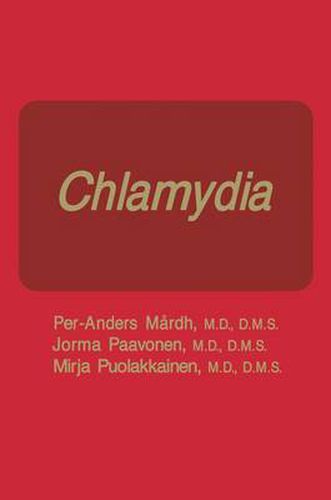Readings Newsletter
Become a Readings Member to make your shopping experience even easier.
Sign in or sign up for free!
You’re not far away from qualifying for FREE standard shipping within Australia
You’ve qualified for FREE standard shipping within Australia
The cart is loading…






This title is printed to order. This book may have been self-published. If so, we cannot guarantee the quality of the content. In the main most books will have gone through the editing process however some may not. We therefore suggest that you be aware of this before ordering this book. If in doubt check either the author or publisher’s details as we are unable to accept any returns unless they are faulty. Please contact us if you have any questions.
During recent decades, it has been firmly documented that chlamydiae are com mon and important pathogens in humans and animals. In humans, chlamydiae are known to cause trachoma (which is still one of the major blinding diseases in the world) and are also one of the most common etiological agents of sexually transmitted diseases and the sequelae thereof, such as infertility. In the last few years, it has also become evident that chlamydiae, i.e., the so-called TWAR agents, are common respiratory tract pathogens. Chlamydiae are also important pathogens in birds and lower mammals, in whom they cause a variety of infectious conditions, a spectrum which has in creased every year. Some of these infections occur as zoonoses, e.g., psit tacosis/ornithosis and, as recently discovered, abortion. Know ledge of the molecular biology and immunobiology of chlamydiae has expanded rapidly during recent years. Insight into the pathophysiology of chla mydial infections has also increased, and new methods for the diagnosis of chlamydial infections have been introduced. The importance of establishing control and preventive programs for chla mydial infections has become obvious in order to combat the present chlamydial epidemic. We hope that this book can usefully serve those who want to increase their general knowledge of Chlamydia and that it can act as a handbook and reference source for those involved in chlamydial research as well as for those working with chlamydial infections in medical and veterinary clinical disciplines, includ ing clinical laboratories.
$9.00 standard shipping within Australia
FREE standard shipping within Australia for orders over $100.00
Express & International shipping calculated at checkout
This title is printed to order. This book may have been self-published. If so, we cannot guarantee the quality of the content. In the main most books will have gone through the editing process however some may not. We therefore suggest that you be aware of this before ordering this book. If in doubt check either the author or publisher’s details as we are unable to accept any returns unless they are faulty. Please contact us if you have any questions.
During recent decades, it has been firmly documented that chlamydiae are com mon and important pathogens in humans and animals. In humans, chlamydiae are known to cause trachoma (which is still one of the major blinding diseases in the world) and are also one of the most common etiological agents of sexually transmitted diseases and the sequelae thereof, such as infertility. In the last few years, it has also become evident that chlamydiae, i.e., the so-called TWAR agents, are common respiratory tract pathogens. Chlamydiae are also important pathogens in birds and lower mammals, in whom they cause a variety of infectious conditions, a spectrum which has in creased every year. Some of these infections occur as zoonoses, e.g., psit tacosis/ornithosis and, as recently discovered, abortion. Know ledge of the molecular biology and immunobiology of chlamydiae has expanded rapidly during recent years. Insight into the pathophysiology of chla mydial infections has also increased, and new methods for the diagnosis of chlamydial infections have been introduced. The importance of establishing control and preventive programs for chla mydial infections has become obvious in order to combat the present chlamydial epidemic. We hope that this book can usefully serve those who want to increase their general knowledge of Chlamydia and that it can act as a handbook and reference source for those involved in chlamydial research as well as for those working with chlamydial infections in medical and veterinary clinical disciplines, includ ing clinical laboratories.